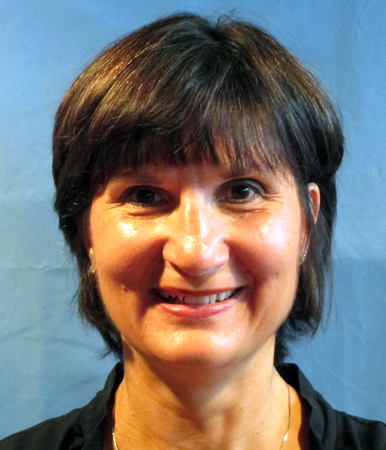Assistive Technology (AT)–Who really Needs it?
by Lea Ann Peschong Central Rivers Speech Language Pathologist

In today’s schools, technology is used daily by teachers and students to explore, to collect data, to research, to organize, to read, to write, and to communicate; to enhance learning. Although many technologies support the learning for all students, an individual with a disability, due to the nature of the disability, may ‘need’ specific technology to level the playing field so he or she can access the curriculum or be more independent. If this is the case, the technology then becomes assistive technology (AT) because it is needed by a student with a disability. By definition, assistive technology includes both devices and services.
According to IDEA, an assistive technology device is any item, piece of equipment, or product system, whether acquired commercially off the shelf, modified, or customized, that is used to increase, maintain, or improve functional capabilities of a child with a disability. (20 U.S.C. 1401(1)) An assistive technology service is defined as any service that directly assists an individual with a disability in the selection, acquisition, or use of an assistive technology device…. Sec. 602 Definitions at the U.S. Department of Education.
Since the definition of an assistive technology device includes ‘any’ item, …, this allows IEP or 504 teams to be flexible in determining the best match for a student’s needs. There is a range or continuum of assistive technology devices. For example, a student with complex communication needs may need a light tech printed communication display and/or a high tech dynamic display voice output communication system to communicate effectively across environments. One who struggles reading due to a print disability may need a reading guide strip, a different colored or type of font, or text read aloud by a text reader in order for information to be gained from the text and to be more independent. A student who struggles with the writing process may need items such as raised-lined paper, graphic organizers, electronic highlighters, word prediction software, or speech-to-text input depending on the area of writing that is most difficult. A student with a physical disability may need to use a variety of adaptive utensils and equipment for activities of daily living. This may or may not include the need for switch input, an alternative keyboard or keyboard layout, adapted mouse input, scanning systems, power mobility, or robots. All the above were examples of just a few of the assistive technologies that might be needed by students with disabilities to complete tasks at a level that they would not be able to do so without the technology.
IEP teams must consider assistive technology when they are developing or reviewing plans for students with disabilities. Assistive technology should be considered for each area that a student may struggle due to the disability and for all aspects of a student’s day. Asking questions when planning for a student is critical in considering whether or not AT is needed. Questions might include: At this time, is there any technology that might support or compensate for the skill that the student is struggling to obtain? Could technology allow the student to be more independent? If the answer is ‘yes’ the student needs technology to be an active, successful learner and/or to increase their independence, then the features of the assistive technology should be included in the student’s plan.
More and more educators are learning about assistive technology options in order to best support their students who require it. Like any technology, trying to keep up with the ever-changing assistive technology options can be a daunting task. However, much information is available on the web. Information can be obtained by subscribing to or visiting various assistive technology sites such as the Quality Indicators for Assistive Technology (QIAT), National Center for Accessible Educational Materials (AEM), WATI, Closing the Gap, Assistive Technology Industry Association (ATIA), High Incidence Accessible Technology (HIAT), company-affiliated sites, or the Iowa Department of Education’s Assistive Technology webpage to name just a few. Currently, there are many local, state, or national conferences relating to assistive technology that individuals can attend to learn more about options available.
On a side note, I am currently typing this blog by using voice-to-text or ‘talking into my computer.’ The tool, Voice Typing, is available for anyone who uses Google Docs and a similar tool is available on other platforms. Remember, technology can support all learners but is considered AT when it is needed by an individual with a disability to increase, maintain, or improve functional capabilities
